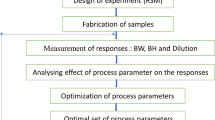Abstract
Dye penetration inspection (DPI) is used to detect surface-exposed cracks in objects. For example, it is used in ball grid array (BGA) microelectronics packaging reliability studies. DPI is a significant time-saver over traditional cross-sectioning when data on every solder joint are required. Wet-dye joints occur when the dye solvents do not evaporate fully after the drying step, leaving behind a dye solution that clings to the solder joints and still flows. As the BGA device is removed from the substrate or motherboard, the wet dye around the solder joint will flow across the newly formed surface, indicating a crack before separation when in fact no crack existed before separation. This behavior only happens with a dye solution that has been reused many times. Using basic concepts and readily available data, it was shown which ingredients of the commercially available dye solution are responsible for the wet-dye joint phenomena. Metrologies that analyze organic concentrations, such as FTIR, are recommended to use for quality control. Furthermore, by monitoring dye solution metrics, the reuse life can be maximized and consequently solution waste—a hazardous substance—can be minimized.







Similar content being viewed by others
References
K.M. Levis, A. Mawer, Assembly and solder joint reliability of plastic ball grid array with lead-free versus lead-tin interconnect. in Electronic Components and Technology Conference. IEEE, 2000
K.M. DePetrillo, US Patent # 6342,400 B1 Dye penetrant test for semiconductor package assembly solder joints. Advanced Micro Devices, Inc., 2002
D. Casali, in Viscosity Study of Dye, ed. by G. Heath, S. Nad (Intel Corp., Hillsboro, 2013)
L.H. Lee, Adhesion of high polymers. II. Wettability of elastomers. J. Polym. Sci. Part A‐2: Polym. Phys. 5(6), 1103–1118 (1967)
M.K. Chaudhury, Interfacial interaction between low-energy surfaces. Mater. Sci. Eng.: R: Rep. 16(3), 97–159 (1996)
P.-G. De Gennes, Wetting: statics and dynamics. Rev. Mod. Phys. 57(3), 827 (1985)
BASF Corporation, Dyes for Inkjet Inks, ed. by BASF, (BASF Aktiengesellschaft, Ludwigshafen, 2000) p. 7
P. Atkins, How The Boiling Point Is Raised, in Physical Chemistry. (Oxford University Press, Oxford, 1978) p. 218
J.S. Chickos, W.E. Acree Jr., Enthalpies of vaporization of organic and organometallic compounds, 1880–2002. J. Phys. Chem. Ref. Data 32(2), 519–878 (2003)
Author information
Authors and Affiliations
Corresponding author
Rights and permissions
About this article
Cite this article
Casali, D.R., Heath, G. & Nad, S. Using Fundamental Concepts to Determine How to Monitor Dye Penetrant Use. J Fail. Anal. and Preven. 19, 45–52 (2019). https://doi.org/10.1007/s11668-018-0576-4
Received:
Published:
Issue Date:
DOI: https://doi.org/10.1007/s11668-018-0576-4




